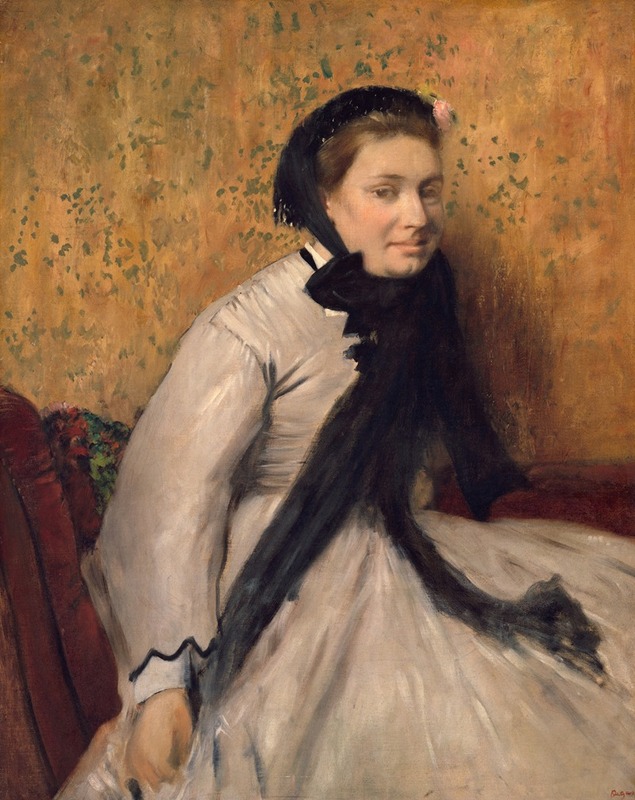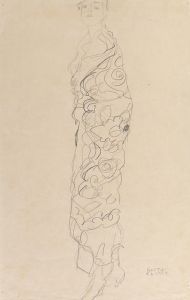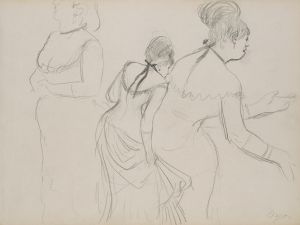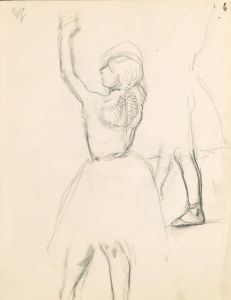
Portrait of a Woman in Gray
A hand-painted replica of Edgar Degas’s masterpiece Portrait of a Woman in Gray, meticulously crafted by professional artists to capture the true essence of the original. Each piece is created with museum-quality canvas and rare mineral pigments, carefully painted by experienced artists with delicate brushstrokes and rich, layered colors to perfectly recreate the texture of the original artwork. Unlike machine-printed reproductions, this hand-painted version brings the painting to life, infused with the artist’s emotions and skill in every stroke. Whether for personal collection or home decoration, it instantly elevates the artistic atmosphere of any space.
"Portrait of a Woman in Gray" is a painting by the renowned French artist Edgar Degas, who is widely celebrated for his contributions to the Impressionist movement. Degas, born Hilaire-Germain-Edgar De Gas on July 19, 1834, in Paris, France, is best known for his works depicting dancers, women at work, and scenes of Parisian life. His unique approach to composition, perspective, and his innovative use of color and light have earned him a prominent place in the history of art.
The painting "Portrait of a Woman in Gray" is an exquisite example of Degas's portrait work. Although the exact date of the painting is not definitively known, it is believed to have been created in the late 19th century, a period during which Degas produced many of his most acclaimed works. The subject of the painting is a woman dressed in a gray garment, seated in a contemplative pose. The identity of the woman remains unknown, as Degas often painted models and acquaintances without always documenting their names.
Degas's technique in this portrait is characterized by his meticulous attention to detail and his ability to capture the subtleties of human expression and posture. The use of gray tones in the woman's attire and the background creates a harmonious and subdued palette, allowing the viewer to focus on the subject's face and demeanor. The painting showcases Degas's skill in rendering textures and fabrics, as well as his keen observation of light and shadow.
Throughout his career, Degas was influenced by classical art and the works of the Old Masters, which is evident in his precise draftsmanship and his interest in the human form. However, he also embraced modern techniques and was known for his experimentation with various media, including oil paint, pastels, and printmaking. "Portrait of a Woman in Gray" reflects this blend of traditional and contemporary approaches, making it a significant piece within Degas's oeuvre.
Degas's portraits often reveal a psychological depth, capturing the inner life of his subjects. In "Portrait of a Woman in Gray," the woman's introspective gaze and relaxed posture suggest a moment of quiet reflection. This introspective quality is a hallmark of Degas's portraiture, setting his work apart from that of his contemporaries.
The painting is housed in a private collection, and as such, it is not as widely known or exhibited as some of Degas's other works. Nonetheless, it remains an important example of his portraiture and his ability to convey the complexity of human emotion through his art.
Edgar Degas continued to work and innovate until his death on September 27, 1917. His legacy endures through his extensive body of work, which continues to be studied and admired by art enthusiasts and scholars around the world. "Portrait of a Woman in Gray" stands as a testament to his enduring skill and his unique vision as an artist.


















